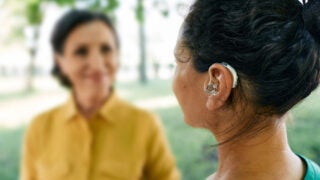Study: Exposure to videos of race-based violence can lead to mental health issues
A new USC study finds that viewing violent videos of police shootings may be harmful to the mental health of adolescents of color.
Social media-based movements like #BlackLivesMatter and #SayHerName have taken off over the past decade as a response to highly scrutinized police shootings of African Americans. Recordings from body cameras or bystanders are frequently posted online and shared by activists and others as a way to press for police accountability.
But those violent videos may also have deleterious effects on the mental health of young members of the same racial communities as the victims in those shootings, suggests a new study published in the Journal of Adolescent Health.
Previous research has linked exposure to violent media with trauma, and other research has connected actual police killings in a given region to poor mental health in same-race communities. Study authors say this study is the first to explore the relationship between repeated youth exposure to violent videos online with mental health.
“Increased exposure to traumatic events online, whether they involve members of one’s own racial-ethnic group or those of other racial-ethnic groups, are related to poor mental health outcomes,” said lead author Brendesha Tynes, an associate professor of education and psychology at the USC Rossier School of Education.
Violent videos leads to depressive and PTSD symptoms
Data were collected from a nationally representative sample of 302 Black and Hispanic adolescents ages 11-19. African American and Hispanic participants were asked about police shootings, immigrants being detained by federal border agents, and beatings.
Study participants reported the frequency of their exposure to traumatic events online, depressive symptoms, PTSD symptoms and other demographic information.
Though not establishing causality, the researchers’ findings showed that Hispanic participants reported significantly more depressive symptoms than African American participants. Female participants reported significantly more depressive and PTSD symptoms than male participants. This was true for teens that viewed violence involving both African Americans and Hispanic individuals.
The study shows that the increase in depressive and PTSD symptoms crosses racial and ethnic lines.
Brendesha Tynes
“The study shows that the increase in depressive and PTSD symptoms crosses racial and ethnic lines — in other words, the mental health of both African American and Latinx teens may be linked to viewing any racial violence, not just that which depicts their own racial or ethnic group,” said Tynes.
Talk to young people of color about exposure to violence online
A 2018 survey of adolescent technology usage from Pew Research Center shows that 45% of youth report they are online “almost constantly.”
Given such high internet use, the researchers suggested that mental health professionals and educators have conversations with young people of color about their exposure to race-based violent videos, and that those professionals should also take steps to improve their own cultural competency.
“The videos of these injustices should be public and people should continue to record and post them,” Tynes said. “The findings show that mental health problems are exacerbated with exposure, so viewers should be mindful of their viewing practices, auto-play settings and how they think about the event after they’ve seen it. They should exhaust all technological, personal and community resources to protect themselves and thrive in the face of these seemingly ubiquitous events.”
The study was co-authored by USC Rossier research assistants Ashley Stewart and Matthew Hamilton, as well as Henry A. Willis, a research assistant at the University of North Carolina at Chapel Hill.
The research was funded by the James H. Zumberge Diversity and Inclusion in Research Award, USC’s university-wide faculty research grant support mechanism.



